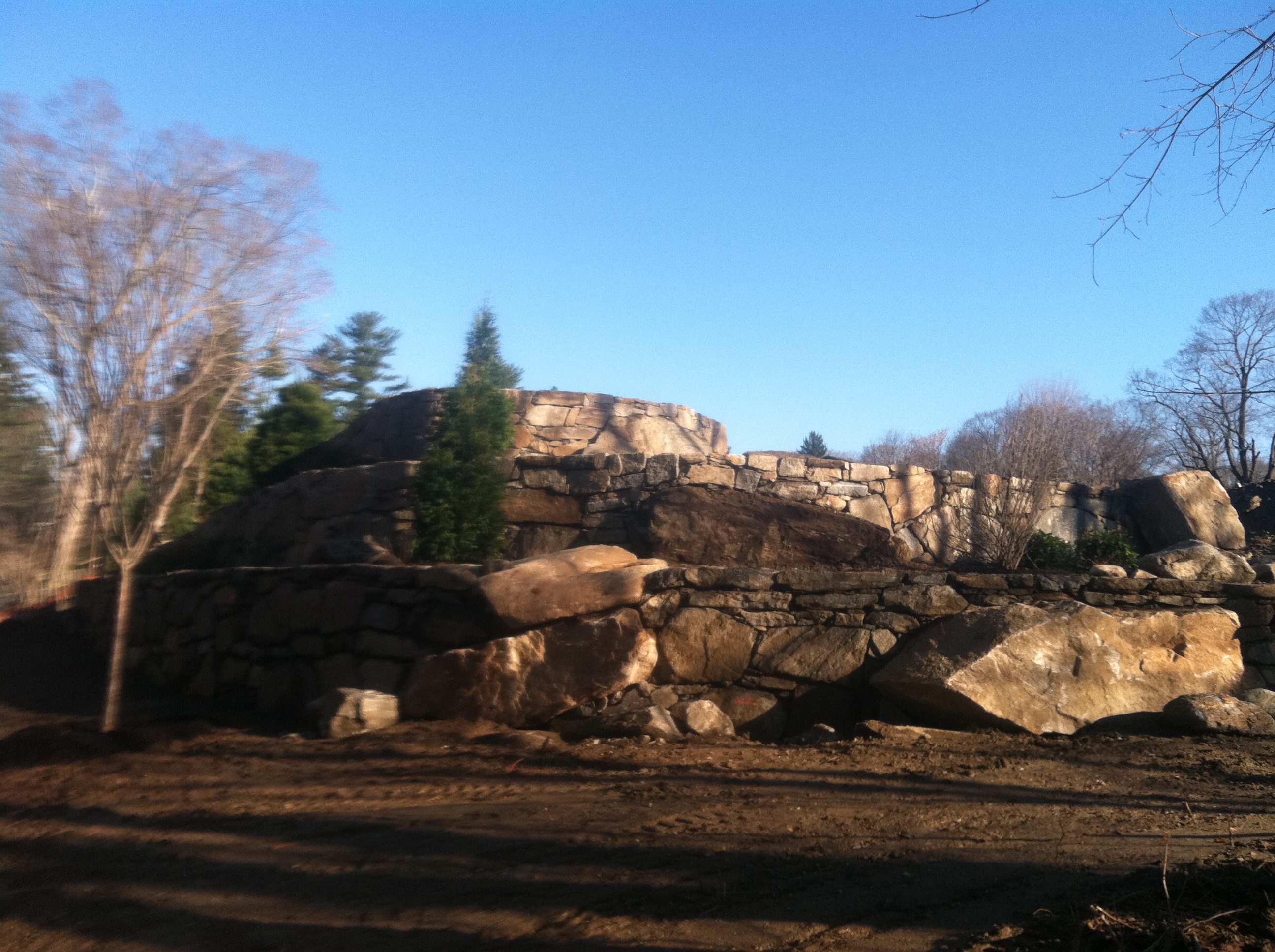What Is a Tiered Stone Retaining Wall? Benefits, Costs, and Design Ideas
Innovative Masonry & Restoration

When you think of a classic stone retaining wall, you probably picture a single wall holding back a slope or garden bed. But when your property has dramatic changes in elevation — or when you want to add depth and visual interest — a tiered stone retaining wall can be the perfect solution.
In this guide, we’ll break down exactly what a tiered retaining wall is, why homeowners and property managers choose multi-level stone walls, and smart design ideas to inspire your next project. We’ll also show you a real-world example: our custom-built 3-Tier Stone Wall at The Stanwich School in Greenwich, CT.
What Is a Tiered Retaining Wall?
A tiered retaining wall (also called a multi-level retaining wall) is a series of two or more retaining walls built at different heights on the same slope or hillside. Instead of one tall wall, the hill is divided into several terraces or “steps,” each supported by its own stone wall.
This design reduces soil pressure on each wall, improves drainage, and creates beautiful landscaping opportunities like raised garden beds, pathways, or outdoor seating areas.
Why Choose a Tiered Stone Wall Over a Single Wall?
Many property owners ask: Why not just build one big retaining wall?
Here’s why multi-tiered designs are often the better option:
Better Stability
Multiple smaller walls share the weight of the soil more evenly. This reduces the chance of bowing, leaning, or collapse.
Improved Drainage
Tiered walls allow better water runoff management, which is critical for long-term durability.
Natural Beauty
Tiered walls break up large slopes, making them look more natural and less harsh. Natural stone blends beautifully with plants, trees, and other landscaping.
More Usable Space
Each level can be turned into a planting bed, walkway, or even patio space. This adds value and function to your yard.
Design Ideas for Tiered Stone Walls
Looking for inspiration? Here are some smart ideas for designing your own tiered stone retaining wall:
Use Native Stone
Choosing local stone helps your wall blend with the natural surroundings. It also keeps your landscape feeling authentic and timeless.
Add Plants Between Tiers
Soft landscaping like shrubs, groundcovers, or ornamental grasses make tiered walls look less rigid and add color through the seasons.
Incorporate Steps or Paths
A winding path or stone staircase can connect the levels, making your yard more usable and visually interesting.
Mix Stone Sizes
Combining large boulders with smaller stones gives your wall a more natural, organic look.
Use for Functional Spaces
Each level can double as a raised garden bed, a sitting area, or a place for outdoor features like benches or planters.
Maintenance Tips
Once installed, stone retaining walls are low maintenance — but don’t forget to:
Check for drainage issues after heavy rains.
Remove weeds or invasive plants that may grow between stones.
Inspect for loose stones every few years and make small repairs as needed.
With good design and professional installation, a stone retaining wall can last for decades with minimal upkeep.
See a Real Example: The Stanwich School Stone Wall
We recently built a custom 3-tier natural stone retaining wall for The Stanwich School at 257 Stanwich Road, Greenwich, CT. This project used large native boulders and careful terracing to create a strong, natural-looking structure that matches the campus’s wooded setting.
See the full project and photos here.
FAQs
How long does a stone retaining wall last?
With quality stone and good drainage, a well-built stone wall can last for many decades or more.
Do I need a permit to build a retaining wall?
It depends on your local codes and the height of the wall. Many towns require a permit for walls over 3–4 feet tall.
What’s the best stone for a tiered wall?
Fieldstone, granite, and other native stones are strong, durable, and naturally beautiful.
Final Thoughts
A tiered stone retaining wall isn’t just functional — it can completely transform a yard or slope into a stunning, usable landscape. If you’re considering one, always work with an experienced masonry contractor who understands proper drainage, soil pressure, and stone placement.
Ready to get inspired?
Check out our 3-Tier Stone Wall project in Greenwich, CT, or contact us to talk about your next masonry project!
